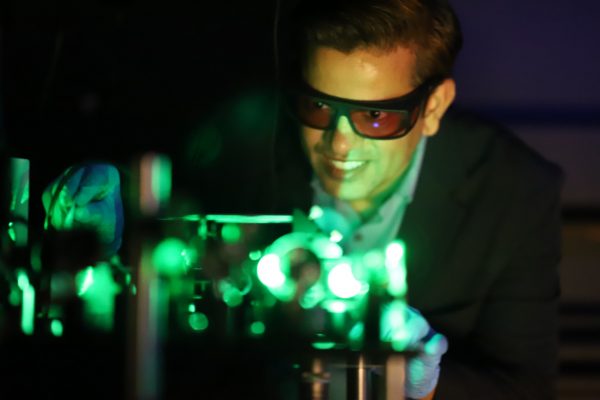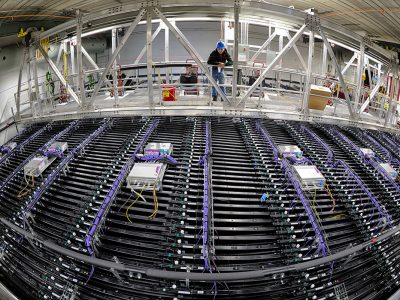Two-dimensional (2D) materials are the thinnest nanomaterials known to exist. Being only a single or few layers of atoms thick, these delicate sheets have found many applications in electronic devices, quantum optics and photovoltaic technology.
Pankaj K. Jha, assistant professor of electrical engineering and computer science in the College of Engineering and Computer Science, is leading a quantum technology laboratory, with members Aswini Pattanayak, Jagi Rout G’28, Amir Targholizadeh G’28, Theodore Todorov ’26 and Grisha Nikulin ’27, to understand emerging 2D materials and use their findings to develop transformative devices for applications in quantum information science.
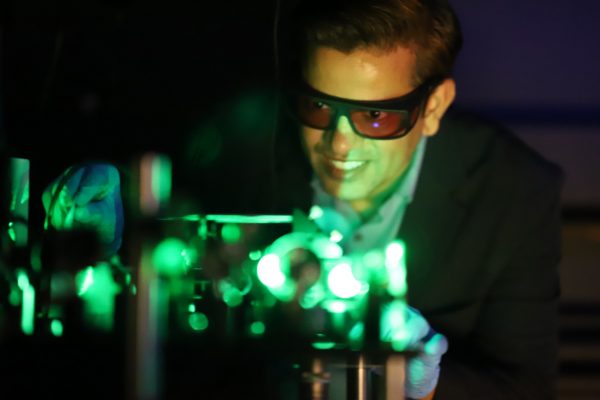
Jha is developing single-photon detectors using iron-based superconductors that could work at higher temperatures. Currently, superconducting photodetectors require low temperatures to operate. Pattanayak, a post-doctoral scholar, is leading this project to understand photodetection in iron-chalcogenide-based superconductors and investigating the interaction between these superconductors with other 2D van der Waals (vdWs) materials, exploring unique quantum phenomena at their interfaces.
“High-temperature single photon detectors will have both scientific and fundamental impact. Any application that requires sensitive photon detectors will benefit from these devices,” Jha says.
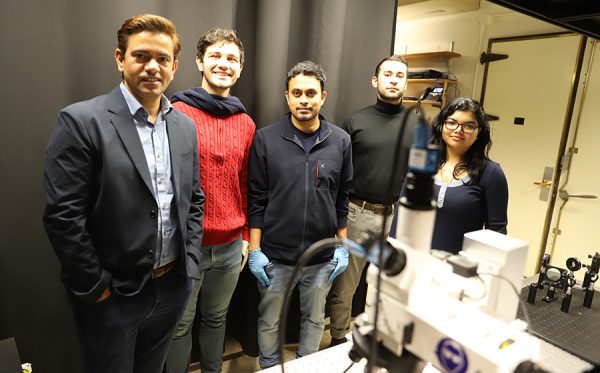
Pattanayak is also mentoring Todorov, an undergraduate student, in light interferometry. Interferometers combine light to create an interference pattern that can be measured and analyzed. “Interferometry is the basis of optics because it allows you to analyze the classical and quantum optical properties of light,” Todorov says. “The resulting interference can allow one to understand properties of the laser such as path length, wavelength and refractive index of the medium it has passed through.”
“In this era of quantum exploration, the investigation of superconductors serves as the cornerstone for unlocking unparalleled frontiers in quantum technologies and devices,” says Pattanayak.
Rout, a graduate student, is exploring heterostructures using nanofabrication techniques. Her research focuses on studying high-temperature superconductivity. In addition to working on single-photon detectors, Rout is developing Josephson junctions, devices made by placing thin, non-superconducting materials between two superconductors, and she’ll be using iron-chalcogenide-based superconductors.
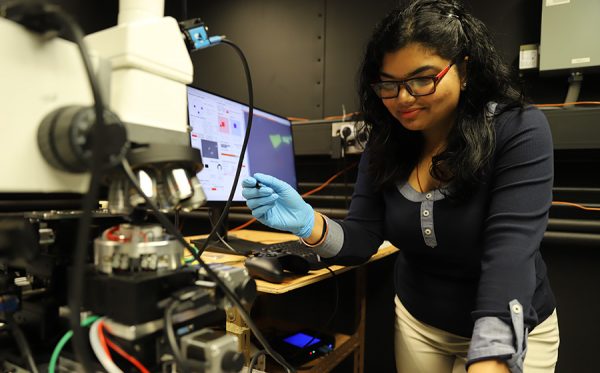
“The interplay among topology, magnetism, and superconductivity makes our material an intriguing platform to investigate the strange yet promising interactions in the subatomic realm,” says Rout.
Rout is also mentoring Todorov and Nikulin in the exfoliation of 2D materials. Nikulin’s interest is Superconducting Qubit Architecture and Quantum Algorithms. “Superconducting-based photon detection also has significant applications towards reducing quantum decoherence in quantum computation systems,” says Nikulin.
Targholizadeh, a graduate student, is developing flat photonic devices based on metasurfaces capable of functioning at extremely low temperatures. He aims to address and solve some of the outstanding challenges that single photon detectors face, such as polarization sensitivity and near-normal incidence requirements, among other issues.
“Metasurfaces are recently introduced as a new paradigm for nanophotonic devices, and in our laboratory, we are working on conceiving, designing, fabricating and testing these metasurface-based devices,” Targholizadeh says.
In addition to research, Jha has started a quantum information science and engineering (QISE) seminar at the University with support from an internal Faculty Creative Activities and Research (FCAR) grant. With speakers from academia, industry and national labs, seminars are open to all and cover experimental and theoretical topics in QISE and adjacent research.
“The response to the QISE Seminar Series has been outstanding, with 60-70% student audience participation,” Jha says. “I see a bright future for quantum science at the University.”
